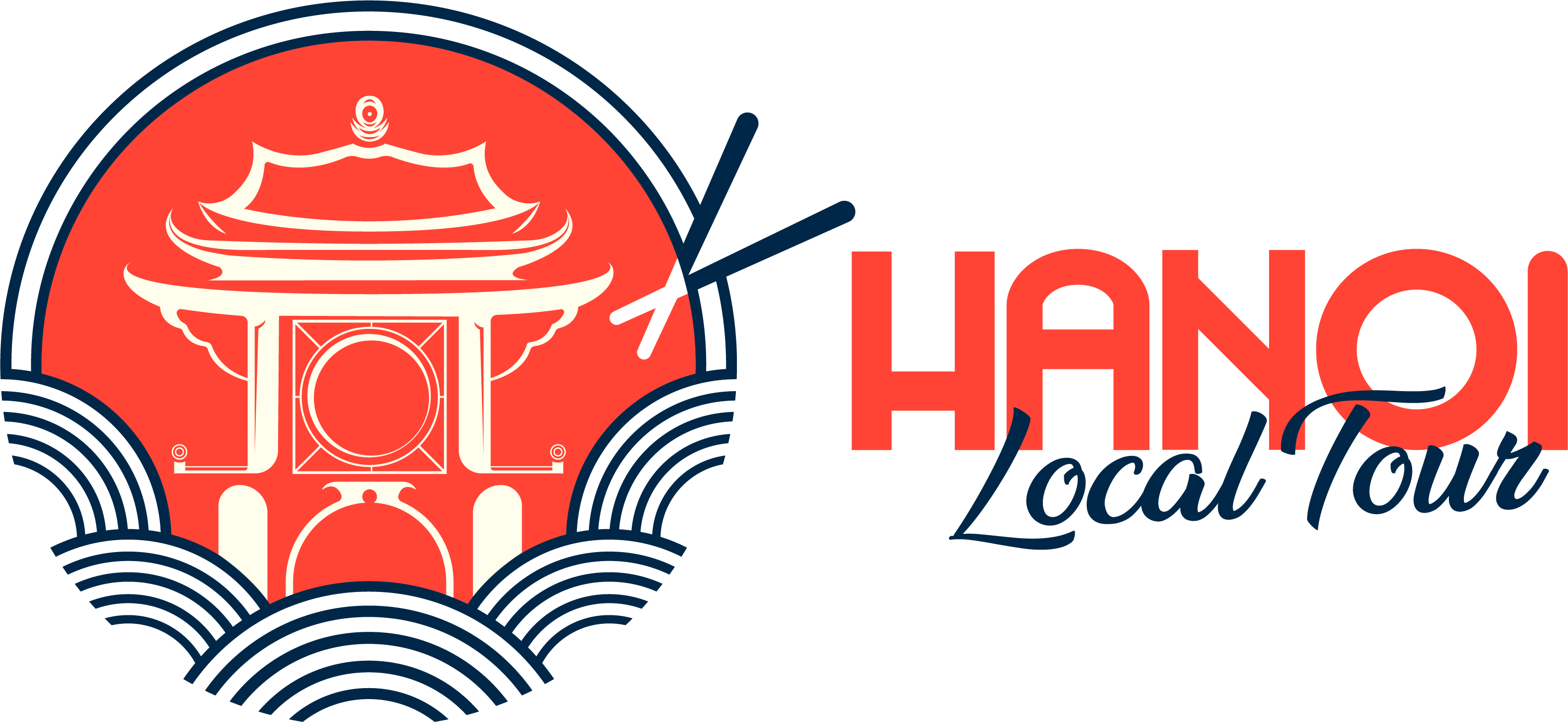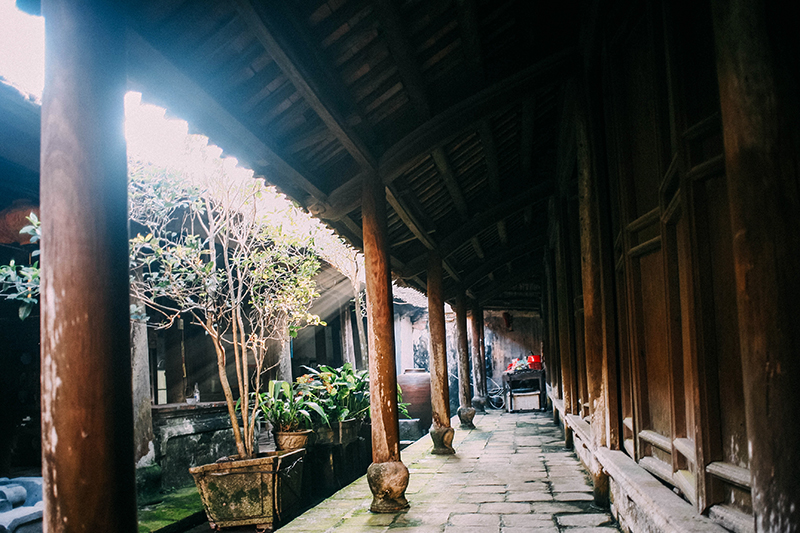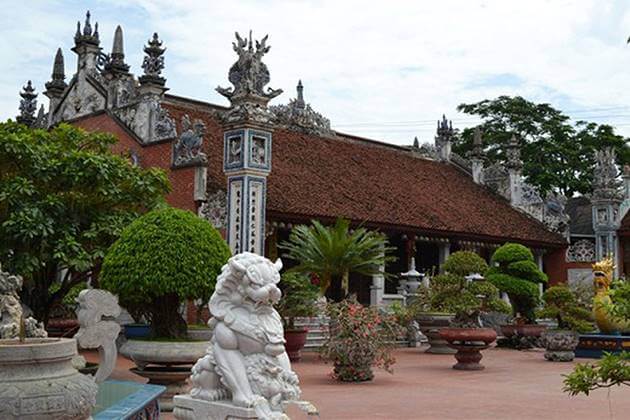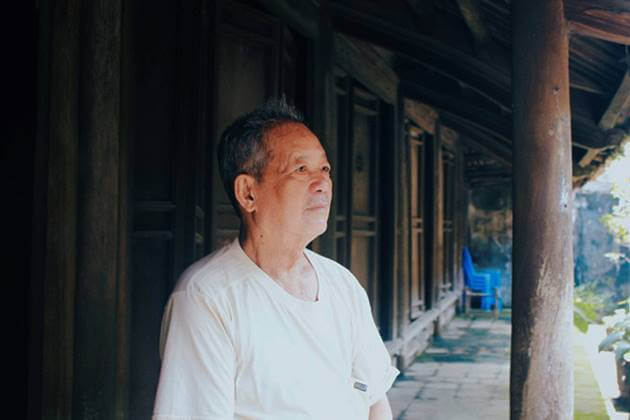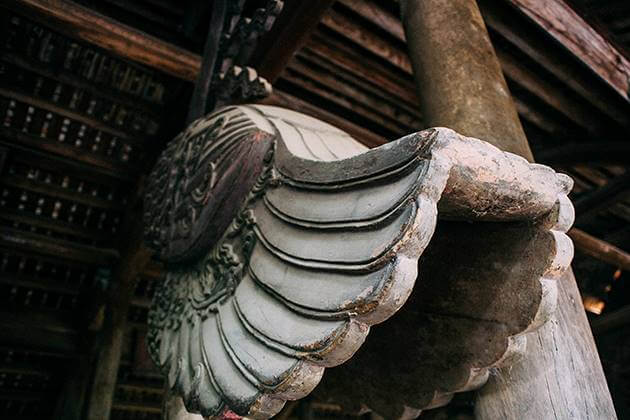No products in the cart.
Hanoi Villages
Dong Ngac Ancient Village
Near the center of Hanoi, there is an ancient peaceful village – Dong Ngac. It is not only a place to visit, explore or have fun but also a place for people who want to remarry about their homeland and peaceful childhood.
A visit to the Dong Ngac ancient village in the Hanoi local tour to see the ancient beauty and enjoy the fresh air at the weekend is the ideal choice.
Introduction to the Dong Ngac Ancient Village
Dong Ngac is also known as the Ve village or Ke Ve village, located at the foot of Thang Long Bridge, in the northern district of Tu Liem, 10km from the center of Hanoi. The village is famous as a studious land because many people passed doctorate in ancient times. Many people are used to calling Dong Ngac village as a “doctor village”.
In addition to the trade as a transit point between the mountain area and the imperial city, the Dong Ngac village has many handicrafts also serve the needs of people both rural and urban. There are eight handicrafts: dyed brown fabric, brick and tile making, lacquer, rattan making, earthenware pots making, seagrass chairs, leaf blower and blower of bamboo knitting, and hat of bamboo knitting, exported by Hanoi merchants to France.
Unique features of the ancient village in the heart of Hanoi capital
If you have the chance to take the Hanoi Local Tour, visit the Dong Ngac village, sit in the middle of the old house, sip a cup of tea mixed in the teapot with ancient prints, leisurely look around, see the wells, brickyard, and green betel, you will find yourself just back to a place too far from the center of the Hanoi capital.
But we’re just a dozen miles away from the center of the capital!
According to Le Van Don, head of the relic of Dong Ngac ward, Dong Ngac village now has about 100 old houses with different dates. There are houses built in 1605, more than 400 years ago.
Experiencing the ups and downs of history, all of them are still standing. Each wooden pole, horizontal lacquered board, parallel sentences are not faded. They are usually built in 3 or 5-compartment houses, with relatively low floors and roofs shakes down on four sides. It was a land of talented people who had worked in the post-Le, Mac, and Nguyen dynasties … so the houses here were built quite remarkably, including many precious wooden columns such as ironwood, teak wood.
Besides architecture bearing the impression of the feudal era, Dong Ngac village also has a blend of old French style. Typically, the primary school near the communal house with small huts painted yellow. However, the European style when introduced here also adjusts to suit the tastes of the people. On the wall, the roof of this school still carved more dragon shape soaring, lotus and curved in the traditional style.
Today’s village is exact as a saying “old village in the city”. Modern and old interwoven. There are many houses built in the style of beautiful villas but still retain the old dwarf huts. In the new houses, there are still stone lions, ancient wells.
In Dong Ngac Village, there are many things to explore. You can visit the Ve pavilion, dating nearly 400 years ago and watching scissors have a life of about 300 years.
Built at the same time with the pavilion but the Ve pagoda draws many imprints. At present, it owns 53 statues, 3 bells were cast in the Nguyen Dynasty and many other ancient objects.
Along the way to visit Ke Ve is a small alley with old names. They are Ngac Lane, Ve lane, Dong Lane. Stripes under the feet are the work of people whose daughters married. In order to be able to lift the decorated chairs, the girls had to pay enough 300 bricks to pave the road. As such, the tilting bricks are constantly expanding, covering the vast Dong Ngac village.
Family spirit and tradition of preserving the beauty of their ancestors
Mr. Do Quoc Hien, head of the family Do, who is managing the old church said, the difficult period as the war period, subsidized, life was at the poverty but the people of Ke Ve try to maintain the original status of the ancient houses. “The garden architecture here is loved by a lot of people, there are people willing to spend billions to buy but the Dong Ngac people never sell.”
Dong Ngac village is divided into several hamlets, each hamlet has a private or temple worship. Although closed all day … but the people here are not willing to sell or encroach the land of the temple.
According to Mr.Hien, Dong Ngac people have a very high family spirit. Each year, on the death anniversary, although busy, the children everywhere are here gathering. “The old days here are called the doctoral village.” Today’s grandchildren, even though they are not Ph.D.s, have high degrees and very successful”, said Hien.
The Dong Ngac people still maintain a rustic lifestyle. Come to Dong Ngac, you can visit any house and ask people to thoroughly introduce each ancient item in the house. They will be willing to invite you to stay, eat a piece of meat roll – the famous dish of Ke Ve land or drink a cup of tea.
Please enjoy these wonderful things to see that Dong Ngac people extremely friendly and hospitable. And when you leave, do not hurry to go, go slowly, because just stepping out the gate of the village, modern life will rush around you. We will back to reality, very fast!
If you have the opportunity to join the Hanoi local tour, do not forget to visit Dong Ngac village. At present, this ancient village can be connected with big relics along the Red River dike such as Chem pavilion, Nhat Tan pavilion, Tay Ho palace, and Nhat Tao, Lien Ngac villages.
If you have the opportunity to join the Hanoi local tour, do not forget to visit Dong Ngac village. At present, this ancient village can be connected with big relics along the Red River dike such as Chem pavilion, Nhat Tan pavilion, Tay Ho palace, and Nhat Tao, Lien Ngac villages.
If you’re interested in discovering traditional villages in and around Hanoi, go here to find your inspiration!
